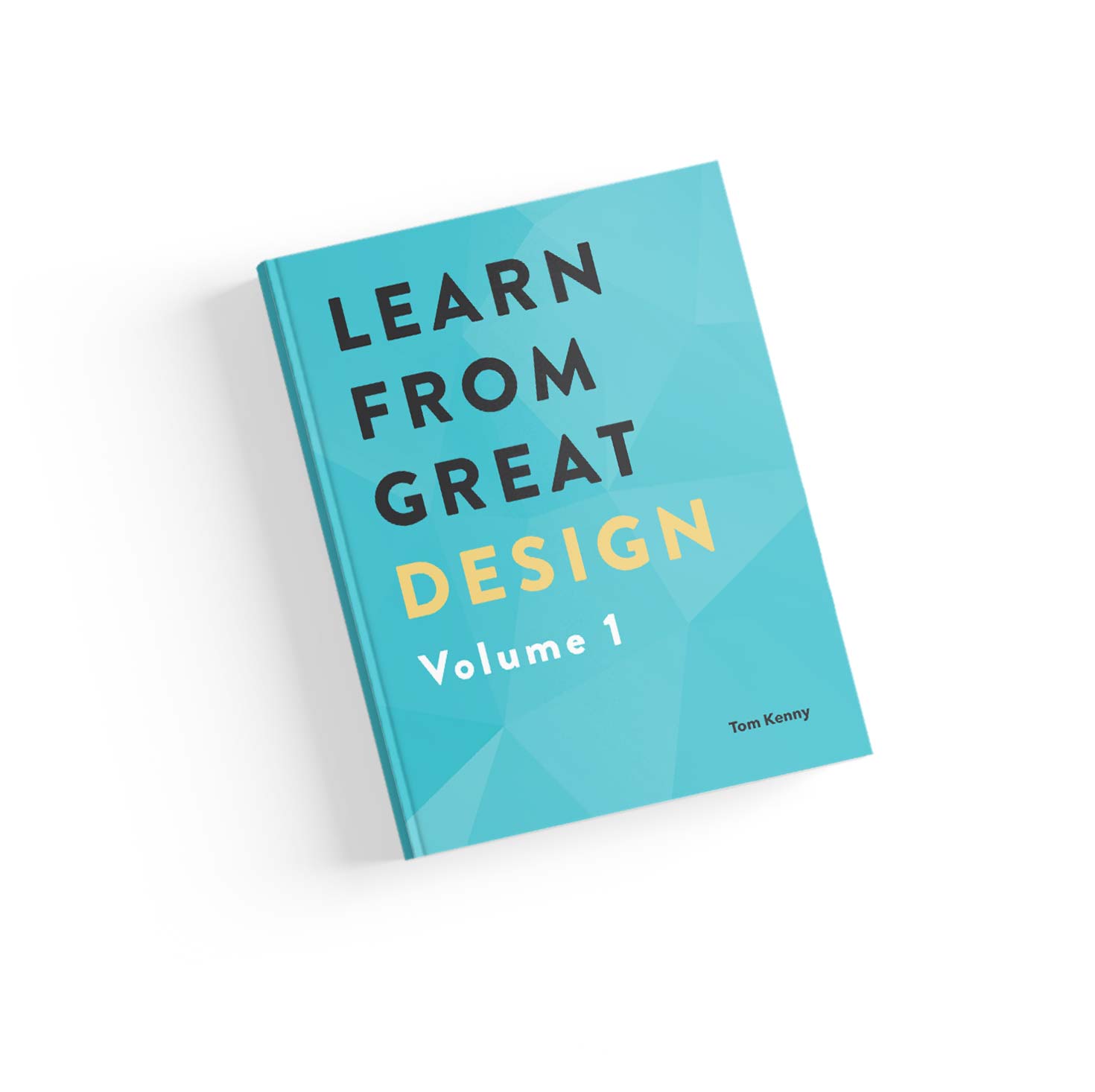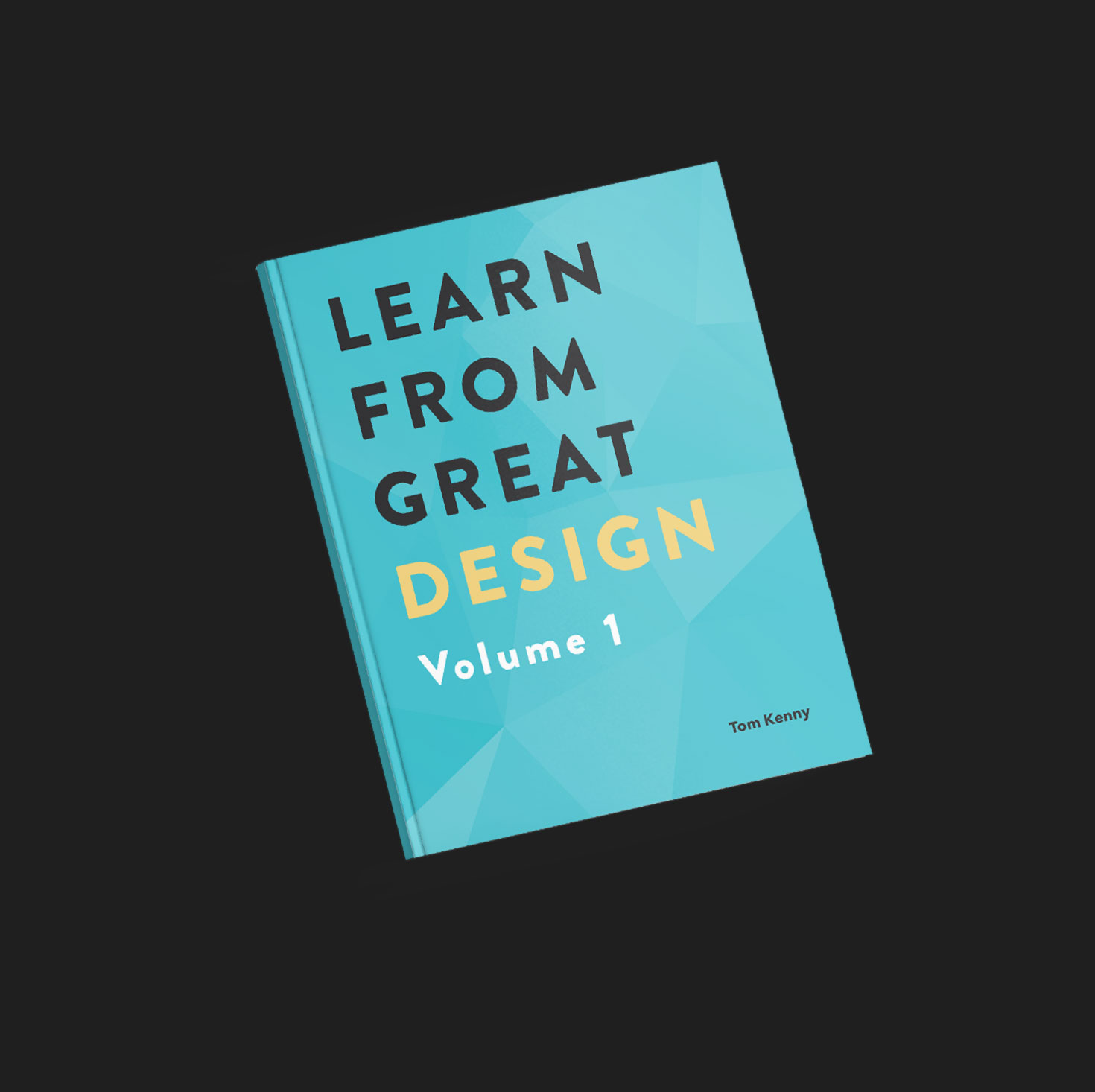It’s a beautiful place, being “in the zone”. Everything feels automatic, almost like you don’t have to do any thinking. Work just flows and you feel like a design genius.
Unfortunately, most days it seems like there’s a giant fence surrounding the zone and you just can’t get in, no matter how hard you try. In this article, I want to help you figure out how to break down that fence and get in the zone on a more regular basis.
Conditions for Flow
According to psychologist Mihaly Csikszentmihalyi, the following three conditions are required for flow (being in the zone):
One must be involved in an activity with a clear set of goals and progress. This adds direction and structure to the task.
The task at hand must have clear and immediate feedback. This helps the person negotiate any changing demands and allows them to adjust their performance to maintain the flow state.
One must have a good balance between the perceived challenges of the task at hand and their own perceived skills. One must have confidence in one’s ability to complete the task at hand.
The purpose of Csikszentmihalyi studies are to discover what makes people happy in general but let’s have a look at how we can apply this to web design.
1. Clear Objectives
One of the conditions for flow, or being in the zone, is clear objectives in relation to the activity.
We know that building a foundation with clear objectives make it much easier to get past the initial blank screen stage, so this is the starting point of any web design project and therefore the beginning of our journey into the state of flow too.
The next stage to get into the zone is experimentation. As soon as you “hook” onto the right direction from experimenting you’re on your way to the magical land of flow. Suddenly there won’t be any fences around the zone and you can just walk straight in.
2. Clear and Immediate Feedback
Feedback in this case doesn’t mean someone telling you how good your work is but instead I like to think of it as your awareness of your design as you’re working on it in real time.
Experience gives you the ability to accurately judge the quality of your work within seconds, hence the requirement for high skill level as you’ll see later in Csikszentmihalyi’s flow model. These snap judgements throughout the course of you designing in flow allow you to keep moving without having to stop and think about it and breaking flow.
In the fantastic book Blink, Malcolm Gladwell calls this “thin-slicing”, which is the ability make very quick judgements using minimal amounts of information.
3. Confidence
Of course, you can’t be in any state of flow if your confidence is low. Confidence is a key component and has a greater chance of increasing if you start out with clear objectives.
In order to have confidence you need to have a high enough level of skill or at least believe you are skilful enough. You also need to be able to trust you are up to the challenge.
As a note of caution, a task can be too challenging, leading to frustration. For example, you can’t expect to get in the zone of building a website if you haven’t learnt HTML and CSS to a high enough standard. It’s going to be a little slower as you build while learning.
Csikszentmihalyi’s Flow Model
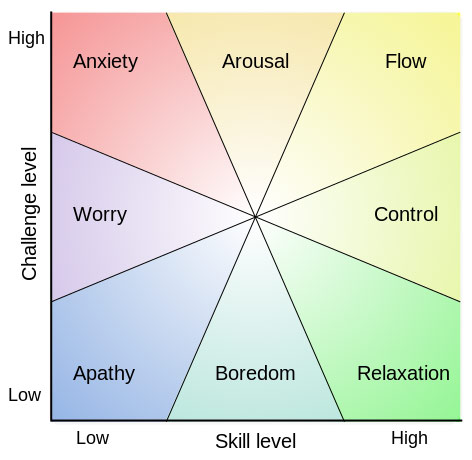
Csikszentmihalyi’s flow model dictates that you need to have a high level of skill and a high level of challenge. As you can see it from the chart, it is possible to achieve flow if at a medium-to-high level with both.
Motivation
Thinking back on jobs I’ve had, lack of motivation is one of the major reasons why I rarely entered a flow state, whether this comes from not really having a passion for the product I’m creating or from entering a comfort zone where the challenge is too low (represented by “boredom” and “relaxation” above).
I’ve been in the zone much more than I ever have simply by working on things I care about. Lately, it’s been my focus of helping web designers like you get the most out of your creativity. I’m really passionate about overcoming creative block, so it’s much easier for me to get into the flow and I even managed it on two separate occasions when writing this single article!
Wake Early and Start With Your Most Important Task
At the end of a work day, figuring out what your most important task for the next day allows you to get up and running as soon as possible. You want to waste as little brain power before you get to work. Your energy is best used trying to get in the state of flow as soon as possible.
I go it this in detail in a previous article, including the apps and techniques you can use to make this part of your daily design process.
Stay in the Zone
Getting in the zone is a precious time that just can’t be turned on and off like a light switch, so you want to maximise the amount of time you’re there.
Eliminate Distractions
There’s nothing more devastating to being in the zone than an unwanted distraction. Studies have shown that it takes a full 15 minutes to get back to the same level of intense concentration, yet modern offices are designed to force co-workers to interact more. When will they learn?! This study is on general office work, so we can assume that the effect it has on design work is more damaging because it can be so difficult to get into a state of flow in the first place.
Distractions, even simple questions about lunch, eat away at the ability to stay on task. This is why you’ll see designers (and developers) buried in headphones and inventing numerous ways to indicate they are not to be interrupted.
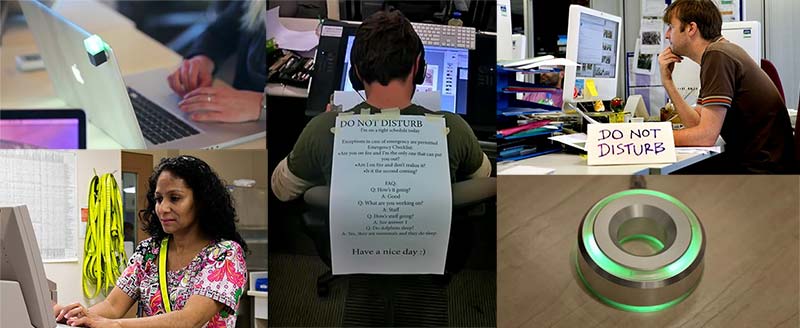
As sad as it sounds, when I worked in a noisy office, I used to get in an hour earlier than most people just so I could get some quality quiet time to work. Working in a noisy office is hell and there is only so much music you can listen to before your ears feel like they are going to explode.
Turn Off Notifications
For the love of creativity, please reduce the number of notifications your electronic devices send. You don’t need to hear a ding every time you receive an email or someone mentions you on Twitter or Facebook. You can check them when you want. If you let them, your notifications will control you. The temptation to check that Twitter mention will be too much at the time but you must take control.
At the very least, I recommend turning on the do not disturb feature from 10pm/11pm until 10am or later to allow you to get a few hours work done without interruption. If you know you’re going to be needing a period of time to work during the day, don’t forget to enable it before you start. All current versions of major operating systems have this feature.
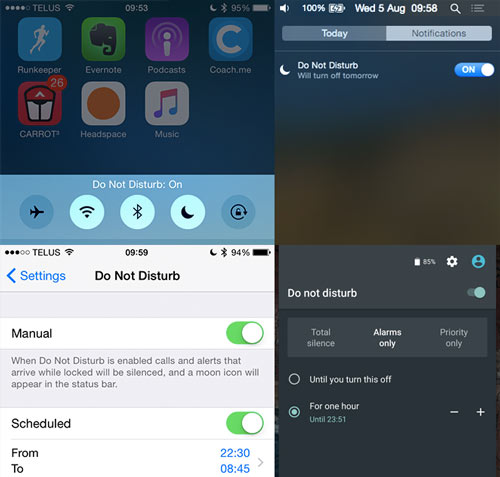
How Does it Feel to be in Flow?
From Csikszentmihalyi himself, during a TED talk in 2004:
- Completely involved in what we are doing: focused, concentrated.
- A sense of ecstasy: of being outside everyday reality.
- Greater inner clarity: knowing what needs to be done and how well we are doing.
- Knowing that the activity is doable: that our skills are adequate to the task.
- A sense of serenity: no worries about oneself and a feeling of growing beyond the boundaries of ego.
- Timelessness: thoroughly focused on the present, hours seem to pass by in minutes.
- Intrinsic motivation: whatever produces flow becomes its own reward.
It’s worth noting that the actual work can be the motivation, so it is possible to enter flow if what you’re working on isn’t that interesting as long as you enjoy the act of web design itself. It’s much easier to get into a flow state if you do care about what you’re working on though.
